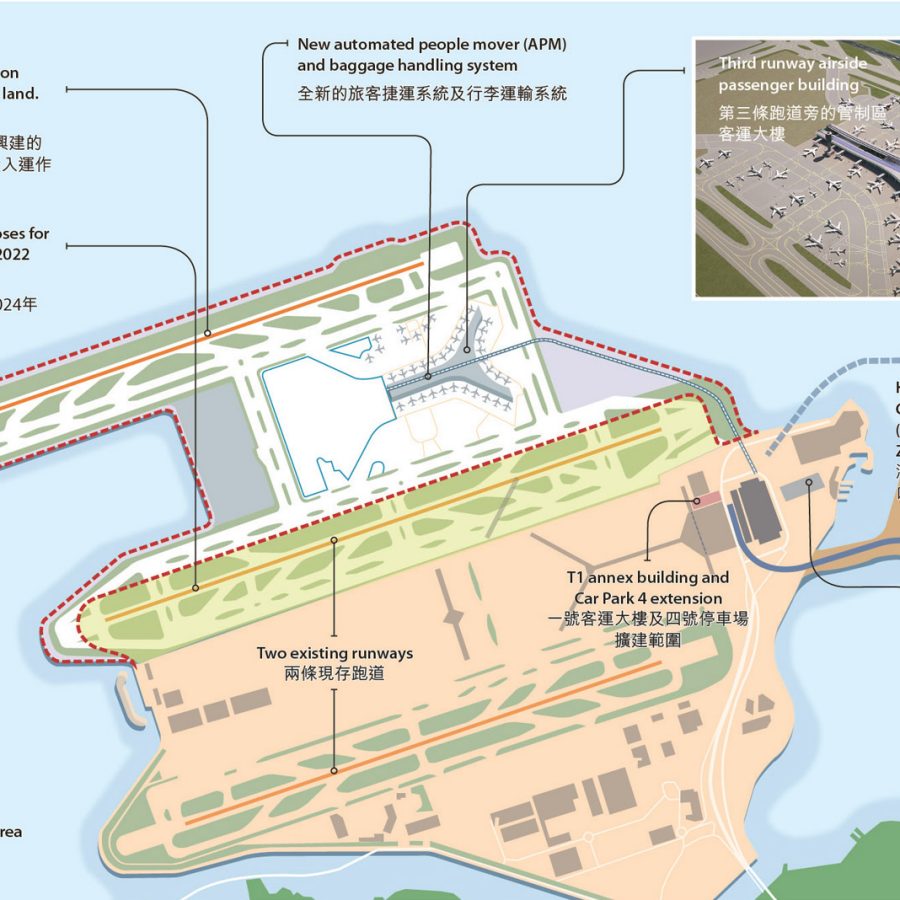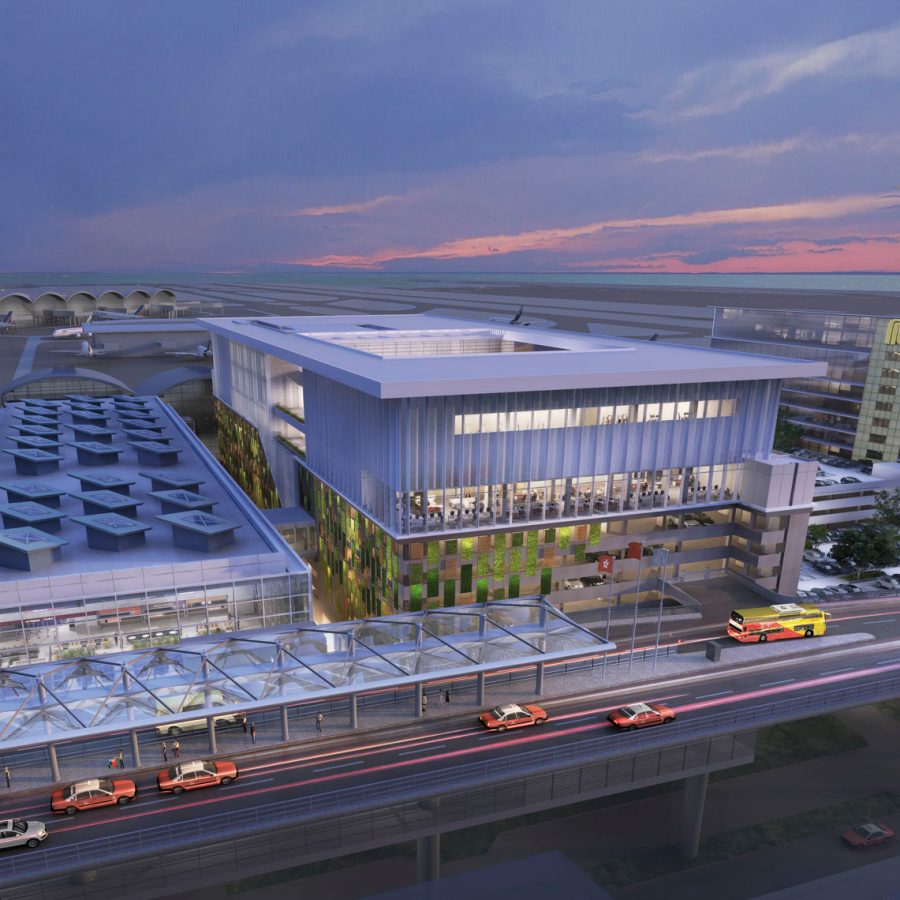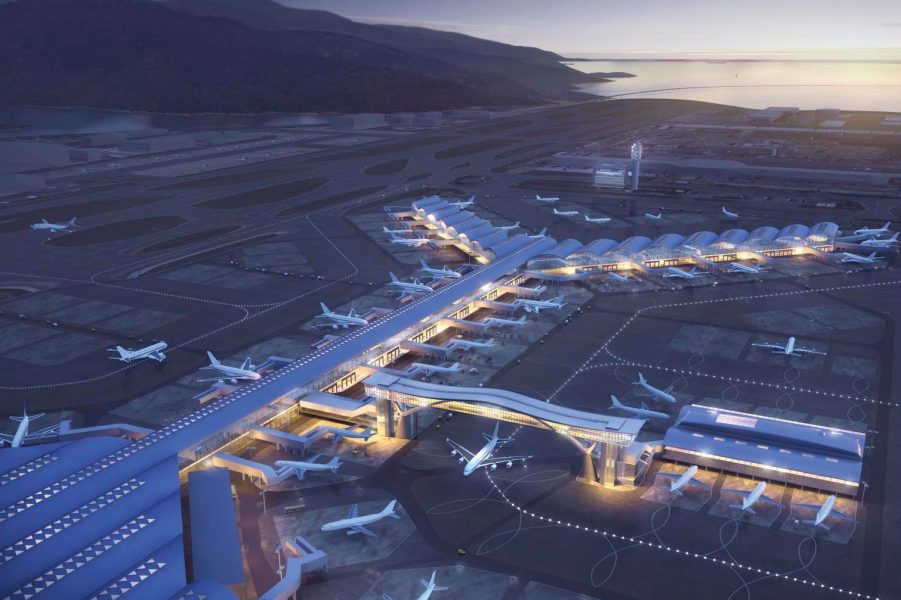It’s July 1998. A young Cathay Pacific manager called James Ginns is onboard the last of the convoys moving equipment from Kowloon’s Kai Tak Airport to the new Hong Kong International Airport (HKIA) at Chek Lap Kok.
‘I remember looking back at around 3am and seeing the Kai Tak lights go out for the last time,’ he says.
James is now general manager Europe for the airline. But back at home base, more and more lights are being switched on as Chek Lap Kok prepares for its next growth spurt.
The construction of a third runway is at the forefront. Further work on the Hong Kong-Zhuhai-Macao Bridge, which leads to the airport, means that there will be infrastructure work taking place in the area up until 2024, when the airport plans to start three-runway operations.
What does that mean in terms of the commercial potential, and how will Cathay Pacific protect the customer experience through an inevitable period of congestion? Patrick Yu (PY), general manager airport service delivery, and Patricia Hwang (PH), general manager sales and distribution, Hong Kong and Pearl River Delta, explain.

What will be going on at the airport in the next couple of years?
PY: The work on the third runway at Hong Kong International Airport has started and there are other bits of work underway. Terminal 1 is being extended between Aisle K and the Regal Hotel , which will bring a new aisle with 40 additional check-in desks and two baggage belts. As soon as these works are finished in 2019, Terminal 2 will be closed for expansion as part of the redevelopment programme. All the airlines from T2 will be merged into T1. You can imagine how busy it will be.
Many people think that three-runway operations will start as soon as the third runway is ready in 2022. The truth is, the current north runway will close for modification and a new airside terminal, baggage system and automated people mover will be built, so the airport will remain with two-runway operations until 2024.
Cathay Pacific will remain in T1 because we will need all the parking spaces we have for our operations.
How will Cathay Pacific and the airport deal with the congestion in the terminal?
PY: There will be more automation for passengers at check-in and boarding. This includes a new generation of check-in kiosks alongside the self-service bag drop. There will be security e-channels. Currently, you present a boarding pass and passport before going through screening. In future, there will be auto-gates, which will make security a quicker process. The first four opened in August 2018.
In 2019, we are anticipating a new auto-boarding process at departure gates. We have to ensure this is something that our transiting passengers can use – around half of our passengers are transferring to other flights, so this is something we are working on with the Airport Authority (AA) .

What difference will the bridge make?
PH: The Hong Kong-Zhuhai-Macao Bridge will bring us closer to the Greater Bay Area (GBA) – as the Pearl River Delta is now known. When it opens later in 2018, we will benefit straight away from the quicker access to the GBA – a 56,500-square-kilometre area with a population bigger than that of the UK.
Customers from the GBA will have the option to take the ferry or the road link to HKIA. Our goal is always to make their experience as effortlessly smooth as possible. Passengers travelling to HKIA on the ferry already enjoy a seamless experience, and by 2022 there will be a bonded bus from Zhuhai which takes passengers straight to airside. However, for the first couple of years, passengers will have to go through border checks in the usual way.
What about the commercial opportunities – and challenges?
PH: The potential is big. The 11 cities in the GBA have a combined population of 67 million people, and it’s still growing, so there’s lots of opportunity. We are well known in Shenzhen, but Hong Kong has not been easy to get to from the western GBA. People would rather use Macao, but with the bridge we are now well in range.
But there is competition. Shenzhen is also trying to grow itself as a hub, and it now has plenty of direct international routes both short-haul and long-haul, including flights to Los Angeles and Sydney, for example.
We need to go back to our strengths and compete first and foremost with our network and frequencies – for instance, we fly around 110 flights to North America every week.
Another advantage we have is the efficiency and seamlessness of the complete customer journey through Hong Kong. Our teams are working hard to enhance that. The infrastructure works will certainly take us in the right direction.
How do we keep the experience at HKIA seamless in the coming years?
PY: For one thing, to cope with the additional traffic the third runway will bring, we are upgrading our online check-in experience. Also, we are introducing more check-in options – we already have check-in at ferry ports in the GBA and there will be check-in desks on the new Boundary Crossing Facilities. We are working with AA and the high-speed rail operators to explore the possibility of having check-in facilities at West Kowloon Station. The AA is also mooting ad-hoc, in-town check-in counters, for example at the Hong Kong Conference and Exhibition Centre in Wan Chai if there is a big event.
PH: As an airline, we support the idea of a joint immigration desk at West Kowloon Station as it will save our passengers time before they change to the Airport Express. From the commercial side, we are trying to offer joined-up fare products for customers. At the moment it’s a ferry plus air ticket combo that we sell. In future, we will combine the bus ticket with the air ticket so a single purchase is all our customers need for their journey.
Hero image: Hong Kong International Airport
- China – the Chinese Mainland, Hong Kong SAR, Macao SAR and Taiwan Region
- Hong Kong SAR - English
- Chinese Mainland (China) - English
- Taiwan, China - English
- 香港特別行政區 - 繁體中文
- 中国內地 - 简体中文
- 中國台灣 - 繁體中文
- Africa
- South Africa - English
- Asia
- Bangladesh - English
- Korea - English
- Singapore - English
- Cambodia - English
- 한국 - 한국어
- Sri Lanka - English
- India - English
- Malaysia - English
- Thailand - English
- Indonesia - English
- Maldives - English
- ประเทศไทย - ภาษาไทย
- Indonesia - Bahasa Indonesia
- Myanmar - English
- Vietnam - English
- Japan - English
- Nepal - English
- Việt Nam - tiếng Việt
- 日本 - 日本語
- Philippines - English
- Australasia
- Australia - English
- New Zealand - English
